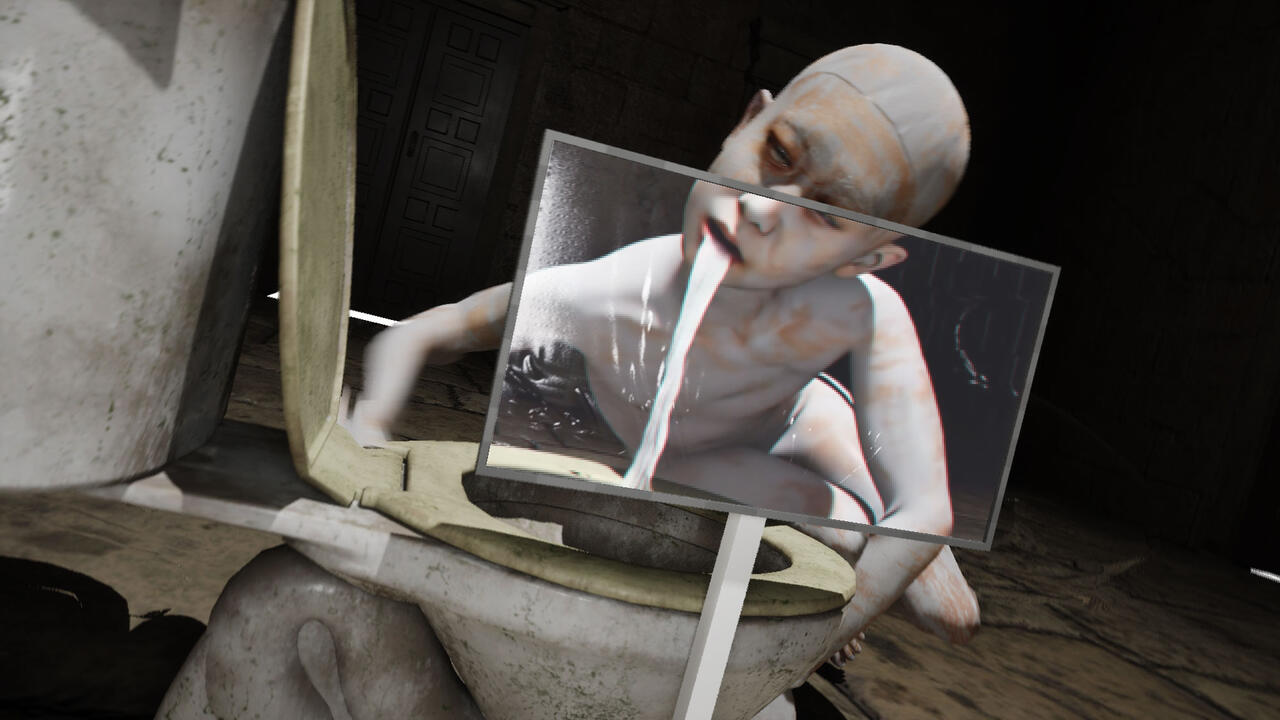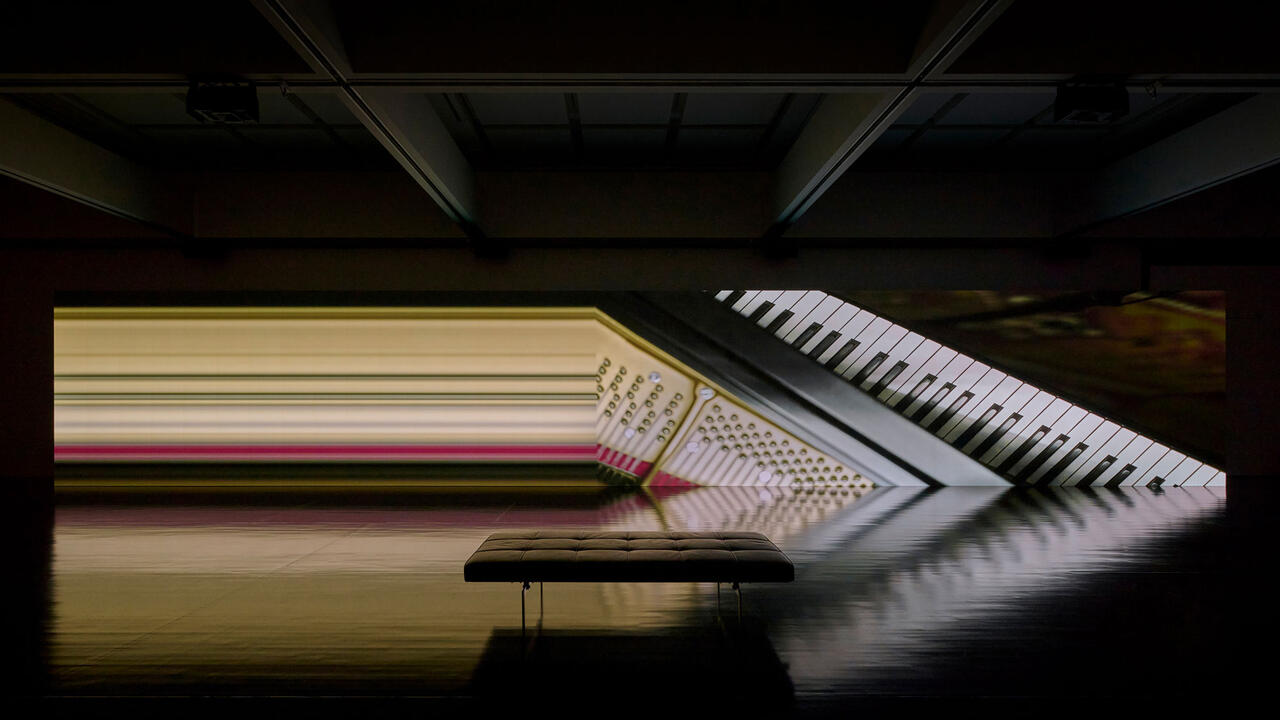Better Bodies
This summer in Vienna, a strange group of objects provided a rare illustration of a crucial moment in Austrian art: Modernism's emergence into the previously aloof and self-sufficient Viennese art world
This summer in Vienna, a strange group of objects provided a rare illustration of a crucial moment in Austrian art: Modernism's emergence into the previously aloof and self-sufficient Viennese art world
Walter Pichler's 'Prototypes' achieved cult status when first shown 30 years ago, but until this exhibition at the Generali Foundation had not been seen since.
Pichler's 'Prototypes' look like the inspiration for a line from David Bowie's 'Space Oddity' (1969) - 'Take your protein pills and put your helmet on'. Made from 1966 to 1969, the eight works are denatured cross-breeds in technoid outfits, with forms borrowed partly from utopian design concepts of the time and partly from a more traditional commodity aesthetic. Their formal characteristics range from the rather classical nature of the first brass and aluminium prototypes to the more scientific appearance of the later ones, which are like devices for space research experiments. Grosser Raum (Big Space), for example, consists of two plastic covers; the larger, spherical one enclosing a small cube with a metallic core containing a fan apparatus. Another Prototype is a polyester table, an everyday object, with inflatable plastic legs and two indentations in the table-top to take the place of plates. The table's title, for Oswald and Ingrid, refers to jazz musician and writer Oswald Wiener and his wife Ingrid, in whose flat many members of the 60s Viennese avant-garde scene met.
Pichler's name for these works is misleading: 'prototype' suggests the lead-up to serial production, but these hand-crafted objects are one-offs. As Pichler said in 1994, 'Utopia is already present in the word prototypes, you don't need to do anything else; they shouldn't be made into a series'. Seen in this light and within Pichler's oeuvre as a whole, they come across as evidence of a belated Austrian Modernism.
Telefonkapelle (Telephone Chapel), also made in 1969, is a tubular aluminium framework covered with linen to form walls. Inside is a black polyester cylinder which houses three telephone directories and a telephone receiver. Tragbares Wohnzimmer (Portable Living-Room, 1967) is a headset with a tiny built-in TV monitor, looking very much like an early virtual reality helmet. Pichler says that this was a critique of technology, directed against the 'isolation' of the coming TV age, and it is significant that Pichler still doesn't watch television, avoiding in his current work any reference to the electronic. But many of Pichler's early works include set pieces from the communications world of that time - radio, television, loudspeakers - that cannot be interpreted as critical in the same way as the TV helmet. For example, his contemporaneous series, 'Körperapplikationen '(Body Applications, 1966-69), revolves around the idea of extending bodily functions through prosthetics such as Fingerspanner (Finger Stretchers). These works illustrate a desire to go beyond the limits of the human body; to create a kind of Cyborg. Pichler's almost mythological attempt at redemption through technology displays a very Austrian approach.
The past is a delicate subject in Austria. The monstrousness of the country's dual role under Nazism, as both victim and perpetrator, left its traces until at least the late 60s. After the war Austria played victim, and this hypocrisy affected the arts. Perhaps for this reason, there was little response to Modernism in Austria; whatever there was took place at a very late stage. The country's ossified social structure only added to the pressure felt by the younger generation, but the response of artists was far from unambiguous: Rudolf Schwarzkogler's destructive self-abuse and the bloody, orgiastic mysteries of Hermann Nitsch failed to offer blueprints for any real alternative.
The 'Prototypes', with their polished, perfect surfaces and solitary charisma, offered a possible way out. They too are ambivalent: with their plastic and perspex, they take aesthetic cues from mechanisation, but their singular nature means they still have an aura about them. While elsewhere in the world artists were using seriality to challenge the autonomy of the artwork, in Austria ritual and hermetic systems worked against this re-evaluation of the work of art. This isolation can be seen through the 50s and 60s in Viennese Actionism and the so-called 'Wiener Gruppe'; Wiener wrote the catalogue essay for Pichler's first Prototype exhibition in 1967. (In 1997, Peter Weibel paid tribute to the 'Wiener Gruppe' by publishing an extensive catalogue as the Austrian contribution to the Venice Biennale.) Although Pichler refers to his aesthetic opposite, Actionism, as 'smeary, mucky art', his pneumatic sci-fi fantasies seem to derive from a similar desire for renewal through catharsis.
Austria had a peculiar way of coming to terms with the present through the paradigms of the past. Only in Austria, for instance, could an avant-garde gallery have been funded by the Catholic church. In the 50s and 60s, the most important centre for contemporary art was Vienna's Galerie Nächst St. Stephan, founded in 1954 and directed and programmed by Monsignor Otto Mauer, a Catholic priest. The gallery hosted art movements from Informel and Tachism in the 50s to the happenings of the 60s, and Pichler's first exhibition was held there in 1963, a two-person show with Hans Hollein, now one of Austria's best-known international architects. Entitled 'Hans Hollein, Walter Pichler: Architektur', Pichler exhibited only drawings and collages. The exhibition, a provocative statement about the future in what Pichler called 'utopia-free' Austria, lasted for only five days. From today's perspective, Pichler's proposal seems to have possessed less of a political or social dimension than a vigorously emotional one. The illustrations in the catalogue include brutal references to aircraft-carriers and flak towers - 'it was important to exaggerate things like that', says Pichler today, implying that the images referred provocatively to the architecture of the recent past. Manifestos accompanied the illustrations: 'All building is cultic' was one of Hollein's axioms.
These pre-postmodern texts by Pichler and Hollein derive from a critique of Functionalism that began as early as the 50s in Austria. A series of architects, now being vigorously mythologised as 'visionaries', had steadily emigrated from Austria since the inter-war period. Amongst them was Friedrich Kiesler, an architect who built very rarely but is nonetheless an enormous influence on the current architectural scene. Hollein met Kiesler in the US after completing his studies in the late 50s, and arranged for him to meet Pichler. Kiesler was to become a great influence on the artist, as was the US: Pichler went to New York after his debut exhibition in 1963, and would have stayed there if he had not been expelled after a year for working without a visa. When he returned to Vienna he began work on the freaky and optimistic 'Prototypes'; the New World influence is clear.
Pichler's current work suggests he took Hollein's 'all building is cultic' as a maxim to live by. There is little to indicate the futuristic optimism of the 'Prototype' period. Obsessed with precision in terms of both craftsmanship and thought, Pichler spends months perfecting sculptural and architectural models before building them on a larger scale as 'houses' on his farm. These eight or nine brick buildings, or 'shrines' as he calls them, look strangely at home amongst the barn and stables. Every detail - doors, steps, roof tiles - has been designed and constructed with enormous care. Intended as suitable habitats for Pichler's sculptures, the buildings make the former farmhouse feel like some prehistoric holy place.
In the late 20th century, some of Pichler's opinions sound extraordinary. 'It is almost impossible to secularise sculpture', he claims. 'A sculpture without cultic qualities is a contradiction in itself.' Of course, his current self-distancing is to a certain extent a pose, just as the elitism and dandyism of the Wiener Gruppe in the 60s were perhaps necessary devices to separate them from unimaginative, stuffy, bourgeois Austria. Artistic events took place within relatively small circles, and concentrated almost exclusively on Vienna; the participants called themselves the 'thin upper crust' with supercilious irony. The group was emphatically apolitical, in contrast with the Viennese Actionists, for example, who for a time indulged in a certain amount of political activism: in Austria the 1968 protest movement was represented not by politicised students, but by the Actionists.
Despite these differences amongst the Viennese avant- garde of the 60s, there were points of contact and common meeting-places, such as the Café Hawelka, the Vanilla Club and the Wieners' aforementioned flat. This sociable approach gave way to a more private mode: Mühl set up the Friedrichshof commune in Parndorf in 1972, Nitsch withdrew to Prinzendorf castle in Lower Austria, Brus went to Gomera and Pichler bought his old farmhouse on the border with Hungary and Slovenia. The austerity and consistency with which Pichler has since pursued his craft, his sudden retreat to the country, mainly for personal reasons ('This optimism fell apart somehow, I suddenly cancelled everything'), but also for better working conditions, suggest a hermetic existence. Pichler no longer needs the protein pills or the helmets of the future: he's been there already.











